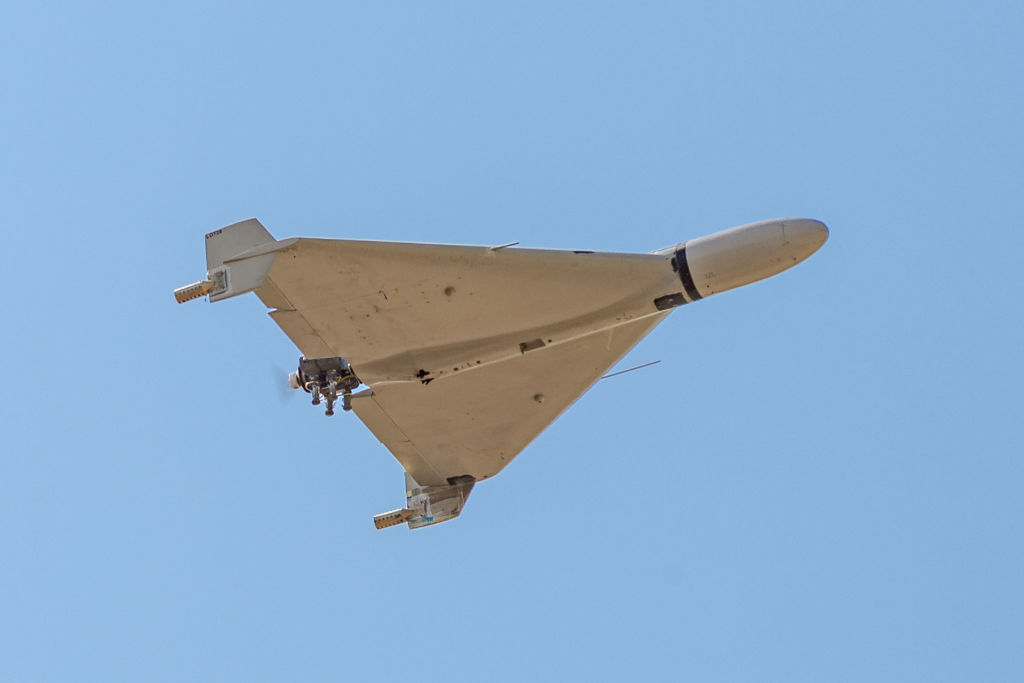
Iran knows a thing or two about robust supplies of guided munitions. Australia should learn from it.
Under the new National Defence Strategy, Australia now plans to create a domestic industry to make guided weapons and explosive ordnance. The first phase, in 2023–25, involves detailed planning, early funding and a $37.4m contract to begin assembling Guided Multiple Launch Rocket System (GLMRS) munitions in 2025. The components will be imported from the United States.
Australia will make progressively more GMLRS parts in the second phase, in 2026–30. Over time, local fabrication of parts will improve supply chain resilience for GMLRS (an army battlefield weapon whose name is pronounced ‘gimmlers’).
Iran exports many different kinds of munitions, such as rockets, missiles and so-called kamikaze drones to proxy forces across the Middle East and increasingly to Russia. Its export strategy includes transferring complete munitions; supplying components to be assembled by the customer; selling upgrade kits for rounds already in stock; and establishing foreign manufacturing capabilities. For example, the Houthi’s small defence industry combines engines and guidance systems imported from Iran with material available locally, such as fiberglass.
Far more than the export schemes of other munitions makers, Iran’s assumes that external actors may cut supply chains, which therefore must be made resilient. At times, Iran’s sales are covert, involve smuggling or breach international sanctions, all conditions that challenge regularity in supply. So Iran is far more willing than other manufacturers to depart from standard, vulnerable arrangements for sole-source, long-term supply.
A flow-on is that the weapon systems intended to be made outside Iran are often simplified designs that semi-skilled personnel can make in rudimentary factories. Exported weapons are often developed and produced by Iranian state entities, minimising use of intellectual property belonging to others. The most extreme simplification for local production is seen in Gaza, where Hamas has used Iranian designs and technical expertise to create a robust industry that makes rockets using building materials and explosive from unexploded Israeli bombs.
Don’t dismiss such practices as bizarre. They may be relevant to Australia.
Australia should plan on the possibility of component and material supplies for munitions being at times highly constrained. In a major conflict, supplier countries may be unable to make parts available for export; physical or cyber attack may knock out their factories; and hostile action may sever supply routes.
The more complicated the munition component, the more likely that Australia will need to import it. Economies of scale work against Australia setting up production lines for intricate items, such as seekers, and arms makers prefer to keep manufacturing of them to themselves.
Australia should therefore stock imported components to continue local high-rate munitions manufacturing. An ability to sustain six to 12 months of full-rate war production using stocked components should give us enough time to find new sources.
Moreover, following Iran’s example, Australia and the original manufacturer might find ways to simplify the product intended to be made in Australia. The simpler manufacturing can be made, the more alternative suppliers can be established locally, further enhancing supply chain resilience. Costs might also be reduced. Russia is licence-manufacturing the Iranian Shahed drone, planning to lower unit costs from about US$300,000 to US50,000 by making the design easier to build.
Similarly, Russia, short of specialised chips for its missiles, has substituted chips taken from foreign consumer goods.
Australia’s civilian domain has vast numbers of devices using semi-conductor chips that in extremis might be similarly accessed to feed into an Australian munitions production line. Parts may come from old phones, for example. However, this would require having already modified the munition design to be able to use such components.
Studying how Iran approaches design and manufacturing of munitions may not seem to be an obvious move as Australia prepares to develop its own industry. But our supply chains share a crucial characteristic with those between Iran and its customers: they can be easily cut.

